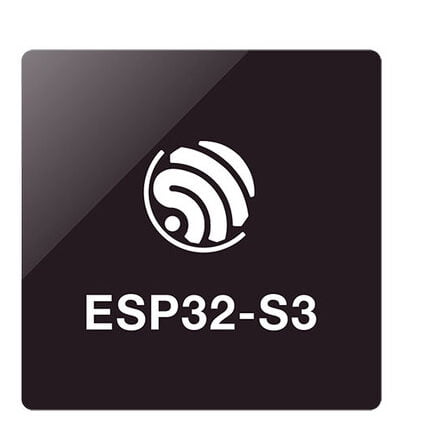In the rapidly evolving world of IoT, the ESP32 line of electronic products has emerged as a favorite among makers and industrial applications. However, with the recent expansion of the ESP32 family by Espressif, it has become increasingly challenging to select the right System on Chip (SoC) for your specific needs. In this guide, we’ll demystify the various ESP32 SoCs, helping you make an informed choice for your next project.

ESP32-H2: Embracing New Wireless Protocols
The ESP32-H2 is the first in the ESP32 lineup to integrate additional wireless protocols beyond the standard WiFi and Bluetooth Low Energy (BLE). This SoC supports Thread and Zigbee, making it a versatile choice for developing devices that require interoperability across different smart home ecosystems. Additionally, the ESP32-H2 features an integrated DC-DC converter, enabling ultra-low-power and energy-efficient operation. Ideal applications include:
- Smart-Connected Devices from Different Ecosystems
- Thread Border Routers/Zigbee Gateways/Matter Border Routers
- Ultra-Low Power Industrial Applications
ESP32-C3 & ESP32-C6: The Next Generation of Connectivity
The ESP32-C series brings two notable SoCs: the ESP32-C3 and ESP32-C6.
ESP32-C3 is a single-core WiFi and BLE 5 SoC, based on the RISC-V architecture, making it a robust and secure alternative to the ESP8266. It offers better security, longer range BLE connectivity, reduced power consumption, and improved memory. Applications for the ESP32-C3 include:
- Upgrading Existing ESP8266 Products
- Building Smart Home or Smart Office Devices
ESP32-C6 takes the features of the ESP32-C3 and enhances them with WiFi 6 capabilities, offering faster speeds, lower power consumption, and the ability to connect more devices simultaneously—a critical feature for IoT applications. Ideal use cases include:
- Future-Proof Smart Devices
- Industrial Applications Involving Numerous Devices
ESP32-S2 & ESP32-S3: Enhanced Performance and AI Capabilities
The ESP32-S series serves as an upgrade to the mainstream ESP32 lineup, offering faster processors, increased security, and on-chip AI capabilities.
ESP32-S2 is a single-core WiFi SoC designed for secure, cost-effective applications with high performance and rich IO capabilities. Its energy efficiency and hardware-based security features make it a suitable replacement for the original ESP32 in applications that do not require dual-core processing. Consider ESP32-S2 for:
- Applications Benefiting from Enhanced Security and Power Efficiency
- Replacing ESP32 in Energy-Conscious Applications
ESP32-S3 is tailored for AIoT (Artificial Intelligence of Things) applications. It features a dual-core Xtensa 32-bit LX7 processor with AI vector instructions, enhancing its capability to handle complex tasks such as offline voice recognition and computer vision. Use cases include:
- Offline Voice Recognition Applications
- Computer Vision Applications
- Wake Word Detection
- Multi-Dimensional Human-Machine Interfaces
By understanding the specific strengths of each ESP32 SoC, you can choose the best one to meet your application’s requirements, whether you’re building a smart home device, an industrial IoT solution, or an AI-powered application.
For more insights and the latest updates on ESP32 SoCs, stay tuned to DIYUsthad.com.
Summary
The ESP32 series from Espressif offers various SoCs, each tailored for specific applications, simplifying choices for makers and industries.
Highlights
- 🌐 ESP32-H2: Supports WiFi, BLE, Thread, and Zigbee for smart-home interoperability.
- 🔄 ESP32-C3: RISC-V based, secure, energy-efficient replacement for ESP8266.
- 🚀 ESP32-C6: WiFi 6 capabilities for faster, reliable IoT applications.
- ⚙️ ESP32-S2: Low-power, secure, single-core Wi-Fi SoC with advanced security features.
- 🧠 ESP32-S3: Dual-core with AI capabilities for advanced applications like voice recognition.
- 🔌 Low Power: Many models emphasize energy efficiency, suitable for battery-operated devices.
- 🔒 Enhanced Security: Multiple SoCs include advanced security features for safer IoT deployments.
Key Insights
- 🌍 Versatile Applications: The ESP32 series’ diverse SoCs cater to a wide range of applications, from smart home devices to industrial solutions, making them a go-to for developers.
- 🔒 Security First: With enhanced security features across models, Espressif prioritizes safe IoT deployments, addressing growing concerns in connected environments.
- ⚡️ Power Efficiency: Many ESP32 models focus on low power consumption without compromising performance, ideal for battery-driven applications, such as wearables.
- 📈 Future-Proofing: The introduction of WiFi 6 in ESP32-C6 and Matter protocol support in ESP32-H2 ensures these devices remain relevant in evolving tech landscapes.
- 🏗️ Easy Migration: ESP32-C3’s design facilitates a straightforward upgrade path from ESP8266, aiding developers in modernizing their existing products.
- 🧠 AI Integration: The ESP32-S3’s AI capabilities enable complex applications like voice and image recognition, pushing the boundaries of IoT innovations.
- 📊 Rich Development Ecosystem: Espressif provides comprehensive libraries and SDKs, enhancing developer experience and application optimization across the ESP32 series.

